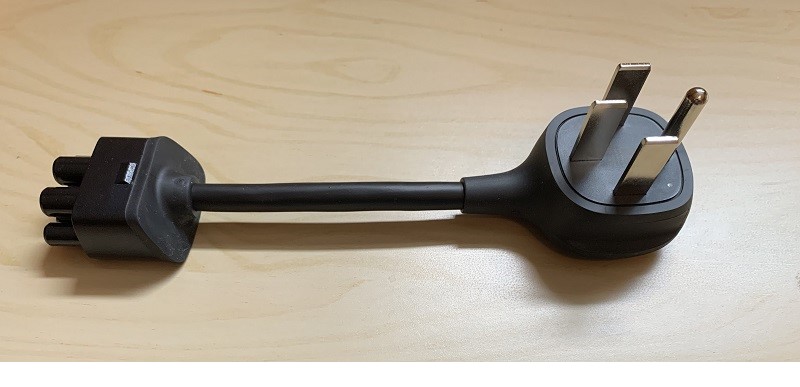Here’s the 240-volt adapter for charging my Tesla’s car battery. (I had to buy it separately; it does not come with the car. Now all I need is the actual car with its battery, right?).
I will need a new electrical outlet, connected to a 240 V circuit, in my garage, similar to the one that I have in my basement for the clothes dryer. The standard 120 V outlet will actually do the job, charging the car. It will just charge a lot slower, up to 8 miles (of battery range) per hour vs. about 30 miles per hour for the 240 V outlet.
 Think of electricity current (electrons) as water in a pipe, and voltage as the pressure that is applied to push the water through the pipeline. High voltage pushes more electric charge per second through the charging cable, and gets the battery charged quicker.
Think of electricity current (electrons) as water in a pipe, and voltage as the pressure that is applied to push the water through the pipeline. High voltage pushes more electric charge per second through the charging cable, and gets the battery charged quicker.
Just for fun, here’s a table with examples of electricity flow, current and voltage.
One ampere of current is one coulomb of charge moving past a given point per second. One coulomb is exactly 1/(1.602176634×10−19) elementary* charges.
*the charge on an electron
| Electricity Flow | Current | Voltage |
|---|---|---|
| Current across human cell membrane | a few µA | 70 mV |
| iPhone consuming battery power | 0.1- 0.5 A | 3.7 V |
| LED light bulb (12W) | 0.1 A | 120 V |
| Incandescent light bulb (60W) | 0.5 A | 120 V |
| Electric eel, delivering a shock | 1 A | 600 V |
| Household clothes dryer | 11 A | 240 V |
| Tesla car battery, charging | 12- 48 A | 240 V |
| Long-distance power transmission line | 700 A | 350 kV |
| Lightning bolt (run for cover) | 30 kA | 300 MV |
